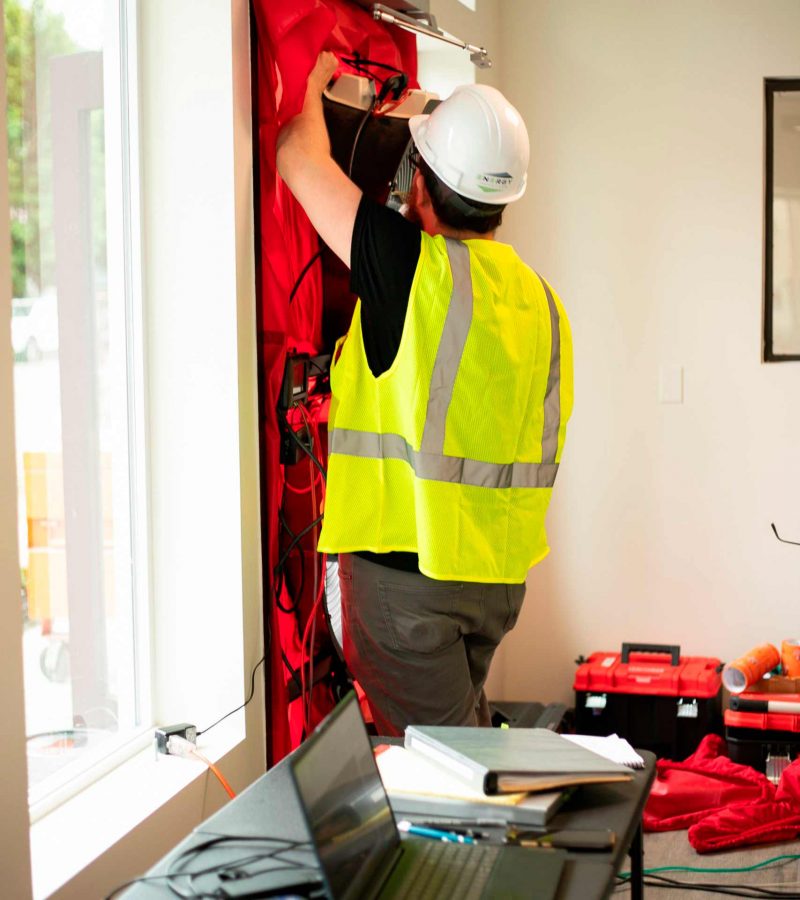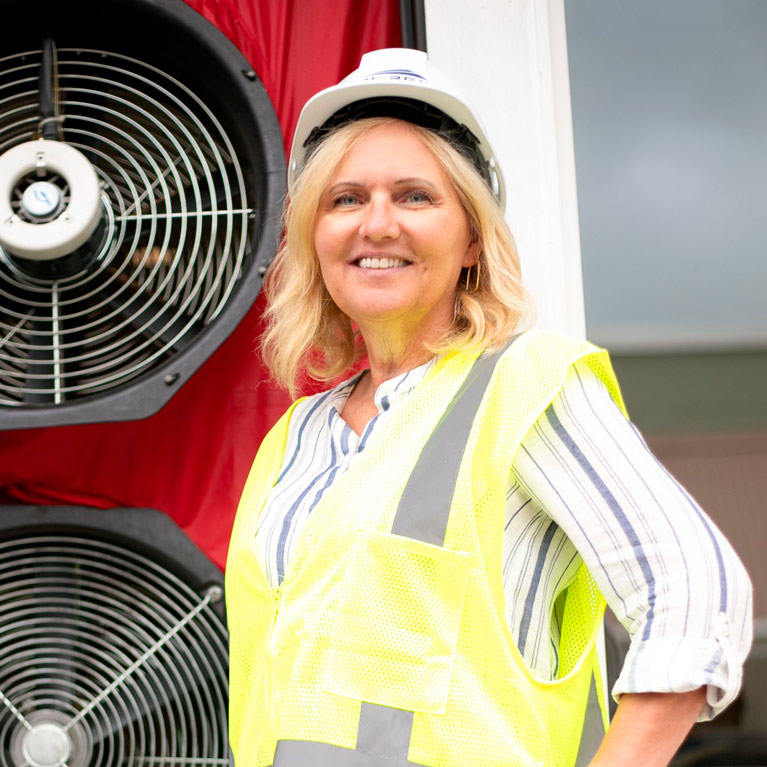Energy Incentives
What Is a Blower Door Test?
A crucial point in any practice is checking a new building enclosure for its interaction with outdoor
conditions, such as wind, fluctuating temperatures, and moisture. When everything works properly,
you can achieve a comfortable place for working and living spaces, without unpleasant drafts, poor
air quality, or problems with mold and mildew.
However, problems with air leaks may occur. The sooner they are detected, the easier they are to be
resolved. A blower door, also known as an air barrier test, is a practical solution for discovering
leakage issues in all sorts of buildings. An air barrier test is a complex process conducted by one or
more Air Barrier Technicians with the help of industrial fans synced with manometers and specially
designed software.
For States with advanced codes, or federal buildings built by the United States Army Corp of
Engineers (USACE), this testing is a requirement. This guide explains how the process works and
who to hire to conduct your blower door test.
How Blower Doors Work
The essence of a blower door check is easy to understand. Energy Incentives installs industrial fans
into your exterior doors, prepares the building, syncs the equipment, and starts to pressurize the
building, the operating fans begin to pressurize the building, creating a pressure difference between
the inside and the outside of the building. There is a known amount of air passing through the fans
and a known volume of the building itself. With this information an air barrier technician can
calculate the leakage of the enclosure.
This is a simplistic description of how a blower door test works. There can be various techniques for
conducting the testing. It all depends on the type of building, how many levels in the building, the
size of the building, the intentional and unintentional penetration of the building, even the elevation
and outside weather conditions are considered. The general strategy for an air barrier test looks like
this:
- An air barrier technician makes the preparatory assessment and a test plan
- It is determined how many fans will be needed and their placement
- The building is prepared for the blower door test
- All HVAC equipment is turned off.
- All interior doors are left open
- A fan or several of them are sealed in the exterior doorframes.
- Manometers and software are synced with industrial fans.
- The building is pressurized and depressurized.
- Hundreds of data points are recorded at a variety of pressures.
- Data is analyzed for accuracy and confidence level.
- A report is given to the general contractor, building owner or agent, and the local
jurisdictions’ building inspector. - If corrections are needed, the air barrier technician will perform diagnostic tests with smoke and thermal imaging.
Air barrier technicians can obtain a variety of data depending on the blower door analysis. The most
crucial metric in all tests are the cubic feet per minute (CFM) per square foot of the building
enclosure. Specific standards for this metric exist in the local building codes, state building codes,
and soon the International Energy Conservation Code (IECC).
Why You Should Know Your Building’s Air Leakage Rate
Air barrier measurements are more than the numbers necessary to pass the blower door inspection
and obtain the required permits. They may help you find practical solutions for air quality
improvement and resolve comfort issues. The testing can reveal the following issues:
- Inadequate air sealing of your plumbing pipes and other conduit channels
- Insufficient insulation of ceilings, floors, basement & attics areas, kitchen soffits, stair
flights, etc. - Improper installation of door/window units
- Roof and outdoor envelope problems
- Improper air barrier application
One problem with these defects can cause is that your building cannot be operated energy-
efficiently. Even if you install an excellent HVAC system in a leaky building, it will need to
consume excess energy to keep your building in a proper state.
Worse, the occupants of the building may experience various signs of poor indoor air quality. There
can be moisture and mold issues in uninsulated areas. If an air leak goes undetected it can easily
become a source of moisture problems.
CEO strategy
Who Should You Hire to Carry Out Blower Doors
Although the results of the blower door test play a crucial role in the durability and sustainability of
your building, the preparatory stage of the blower door process is the foundation that supports
accurate test results. If the building is improperly prepared, the results will be meaningless. Hence
the need for trained professionals. Energy Incentives offers:
- Several staff members trained by the Air Barrier Association of America
- A level II thermographer
- 2-time winner of the Energy Star Partner of the Year award
- Over 25 years’ experience in building science
- LEED Green Rater on staff
- Experience in air barrier testing since 2019
- Energy Star Benchmarking
- Certified Energy Star Multifamily New Construction (ESMFNC) verifier
- Zero Energy Ready Homes (ZERH) verifier
- 45L tax credit assistance
Energy Incentives, INC has several staff members trained by the Air Barrier Association of America
(ABAA) in whole building air tightness testing. We have tested buildings that range from 10,000
square feet to 200,000 square feet. We also have a level II thermographer on staff to help with
diagnostics of problem areas. We are competitively priced and will work within your schedule, often
arriving on Saturdays so as not to disrupt other trades.


Our solutions
Why Energy Incentives Is Your #1 Choice
The number one thing that we offer our clients is a professional test with quick and accurate results.
We value the importance of your schedule and will work hard to avoid any delays.
Before arriving for the air barrier tests, we will already have a test plan, we will have communicated
with your HVAC contractor and electrician. We will come prepared with adequate equipment, and
we will act in a safe manner, being respectful of your safety record. We have over 12 TEC fans,
which enable us to test very large buildings. Our manometers are state-of-the-art electronic devices.
Wi-Fi enabled equipment allows use an advantage over older analog devices that other companies
may use.
We are eager to help you with your new construction, commercial building or single-family
subdivision. Our passion is building science. Our goal is to be responsive to your blower door
questions.
Contact us for more information regarding your air barrier test.
